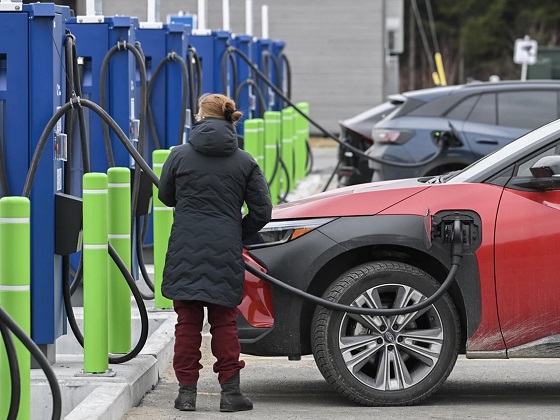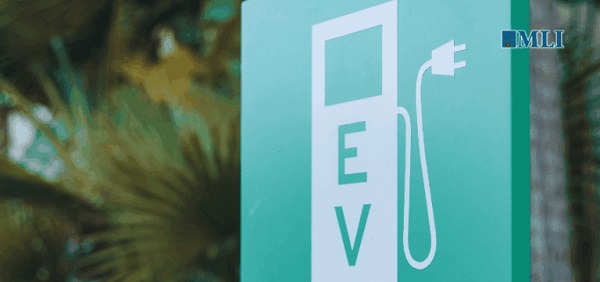Automotive
Automobiles, human nature, and the challenge of building cars that people actually want

From the Frontier Centre for Public Policy
By Terry Etam
Some people out there have an inner itch to do things different. Maybe it’s art, or music, or some other glorious pastime that we as the rest of humanity benefit from, far, far more than we pay. What sort of car these types drive is fascinating; usually something quirky or wonderfully weird; Neil Young spent years before he made it big driving an old hearse, various narcotics taped under the dash.
Others think completely differently, bone-dry aesthetically-speaking; thinkers who just want to make things better. Their inner guiding light is efficiency. I had a genius uncle, a farm boy who made it to high levels in national security in Ottawa through no formal education and sheer ingenuity, who would love describing how he could achieve 70 miles per gallon driving carefully and methodically and under-the-speed-limit around Ottawa in a tiny car, joyously oblivious to Type A heads exploding in his rear-view mirror.
Most people are somewhere in the middle, neither artists nor efficiency maniacs, a space that is quite comfortable for most of humanity. We like nice things, we like how they look, but we also care about practicality. We want to be different from everyone else! But just a bit, or that’s weird. And we all want to drive! Even if it is getting harder and harder for today’s youth to afford it, that drive is still there if finances allow.
This overwhelmingly dominant trait can drive the two extreme camps crazy, a battle that becomes stark and vivid in the automotive industry. Our automotive choices make a statement whether it is intentional or not, and whether we want it or not, because nothing makes a person easier to judge than their automotive preferences.
That’s a reality that people who want to change the world have to accept. It is a very hard thing to swallow, particularly for logicians who can make a near-perfect argument as to why one choice is clearly superior to another, and yet people will look you in the eye and do the opposite. (Long ago when minivans were fully earning their stripes as useful and comfortable transport, about when the perplexing stigma of minivan ownership was setting in, I watched a friend of a friend, standing five-foot-not-much, try and wrestle a mountain bike onto the roof rack of her SUV (yes, yes, I helped), and as she did so she said, “What I really need is a minivan but what would people think of me if I drove one?”)
Minivan vs. SUV was symbolic of the sheer power of how the 80-percent-in-the-middle will shape the landscape, to the extent that personal choice is allowed (hope you’re not scoffing at that, if so, see: federal 2035 all-EV mandate). Because I’m petty and juvenile, it used to fill me with scorn to see people sub-optimize such an expensive purchase on the altar of ‘what other people think of me’.
I’m still petty and juvenile, but have gained enough miles under my wheels to know that things aren’t so simple, and even if they are, it is hardly any of my business what people choose or why. Some care about resale value. Some like an available colour. Some like the feel of the steering wheel or comfort of the seats or the look of the front grille. So what.
It’s not easy for automakers either, because it’s not just that people will actually make auto purchase decisions based on some ridiculously small feature, but also that the lead time from when consumer preferences head in a new direction can be far less than the time it takes to develop a new vehicle. For example, a significant change in gas prices can lead to a preference, or abhorrence, for small, fuel efficient cars, while manufacturers won’t really be able to fully reflect this for a few years.
That’s what makes the EV ‘transition’ so fascinating. If there is one thing that is glaringly obvious in the whole topic, it is that people absolutely do not purchase ‘what they are supposed to’. You can’t make any sense out of it, because the whims and motivations come from external influences that are unpredictable. If Taylor Swift started driving a black Toyota Corolla sedan all of a sudden, what do you think would happen to black Toyota Corolla sedan sales? Not sales of grey ones though, pah! What am I, crazy? Who’d be caught dead in one of those things?
So now, particularly here in Canada but in many other jurisdictions including California, drivers are being told they will not be allowed to buy any new vehicle that isn’t EV, nor will manufacturers be allowed to sell anything that isn’t an EV.
The manufacturers are playing their part, nervously unveiling EV after EV after EV. They advertise the crap out of them, auto publications dutifully test and review them, and the media breathlessly reports how a model’s sales skyrocket by, say 33 percent, when sales go from 3 to 4 units per month.
The media also jumped all over stories about huge demand backlogs, how some new model about to enter showrooms has thousands and thousands of orders or deposits. In 2021, news widely circulated that “Ford F-150 Lightning pre-orders have been closed after nearly 200k reservations”, or Motor Trend’s “Ford Takes in More Than 44,500 F-150 Lightning Orders in 48 Hours”.
Think about how amazing that order book is. A mass manufacturer like Ford is so swamped with interest that they simply must grandiosely and loudly announce: “Sorry Sir or Madam, we can no longer take your order, our success is just too overwhelming.” Many manufacturers reported similar order-book hysteria.
It turns out that the story was surreal, but not quite as it sounds. Through all of 2022, Ford sold only 15,617 electric pickups. The headlines for 2022 results remain starry eyed and insipid: “Ford Tripled BEV Sales In December, Doubled In 2022”, although that couldn’t hold a candle to the infantile enthrallment saved for late 2023: “Ford F-150 Lightning breaks monthly sales record, doubling in November”.
Sales in November 2023 did indeed ‘double’ compared to the prior November, but in the entire quarter Ford sold only 11,905 units. In the two years after the hail-the-future order book bumper crop, Ford only sold about 40,000 F-150 Lightnings. In two years. Recently Ford announced a halving of 2024 production plans down to about 1,600 units per week, or just under 7,000 per month.
Keep in mind that in 2023 Ford sold over 750,000 F-150 internal combustion pickups in the US, and many of these go to urban dwellers for whom an EV pickup might make total sense – ones that rarely leave the city (EVs are in general far better suited to urban environments where they can scoot home safely to a nice warm private charging station every night).
Which brings us back to consumer behaviour again, that mystifying and surely exasperating trait of humanity that no amount of cajoling and ‘proper thinking’ will break. “Two hundred thousand reservations!” to “Slashing production forecasts!” In half. On a variant of the most popular vehicle in the US.
Tesla continues to dominate EV sales, and many people, when they decide they want an EV, mean they want a Tesla (in the pickup world, Rivian might be the Tesla of EV pickups, time will tell). Major auto manufacturers are having a very difficult time seeing EV sales grow to any level that would approach profitability.
It’s hard not to feel bad for them, if one can or should feel bad for huge corporations. How on earth does one plan for the coming year, when two hundred thousand consumers say yes, I want one of those, but then 80 percent change their mind by the time Ford can actually manufacture them?
But observe; whispering in their manufacturing ears are governments saying not subtly that “Don’t worry, we will be legislating internal combustion out of existence, just build them and they will come…” Said less loudly is the supporting evidence: “because they have no choice.” Well, it worked for a while in the Soviet Union didn’t it?
Making things even more complicated for manufacturers are upcoming elections in the US (this year) and Canada (what feels like an eternity but is really only 1.5 years) that could see either minor or major revisions to EV policy rollouts of the past few years.
But forget all the uncertainty surrounding manufacturers; that all gets trumped (no pun intended) by the human element. Here’s an important realization that we all need to accept: Some stuff just gives us a sense of belonging with others in a way that is critical to mental well being. Some people like to dress in the latest fashion. Some get the most popular hair styling. Some drive a rugged SUV because of what it says about them.
That can make manufacturers pull their hair out, because something illogical might be their biggest hit ever. But on top of that one must now layer the rancid decay of politics. EV sales seem to be falling along political fault lines, which in a way is not surprising: one side of the political spectrum sees climate change as a moral imperative to be dealt with as rapidly as possible, and that element, to the extent it can afford it, is responsible for the highest uptake of EVs (it is another sign that ‘left wing vs. right wing’ is a historical anachronism of little value any more; the traditional ‘left’ represented the working class, the downtrodden, the ones that needed a safety net; today’s main EV purchasers are wealthy enough to pursue Teslas first and foremost, often with a multi-car garage full of options). EV as political statement is yet another example of how our preferences link us to a tribe of our choice, rational or not, and it will be supra-humanly difficult to change that, whether in Canada or the US or Togo.
All one can conclude from this hodgepodge of observations is that the auto market will continue to reflect certain aspects of human nature that we may not even be aware of ourselves, and also reflect physical, financial and security realities/rationales that will not be changed by government edict. I have no idea what that means in terms of a transition to EVs, and that trajectory could change with the development of new battery technology, for example. But at present, it should be clear, based on examples like the Ford F-150 Lightning EV experience, that human enthusiasm and professed care does not necessarily translate well into the cold hard reality of what people put their money down on.
It is a nuanced world. People are imperfect and beautifully so, it adds colour to the world. Either the landscape is more or less free, where people express themselves as they wish, or it is a closed quasi- or full-dictatorship where that is not permitted (see: censorship, over-reaching legislation, thought police/moralistic systemic governmental intervention, personal carbon budgets, etc.). The latter never succeeds because it fights human nature, and the former has elements that make no sense outside one’s own circle of people that get it. I choose not to be part of some tribes, but I probably choose to be part of others, and likely do so subconsciously, which makes the whole thing even trickier.
Current politicians and WEF-types believe they have a blueprint for humanity to unroll. It is an absurdity, if for no other reason than they can’t comprehend the complex realities of 8 billion people whom they are trying to force in a certain direction. They are trying to force them all into metaphorical minivans, because minivans make more sense than anything else. They will fail.
Terry Etam is a columnist with the BOE Report, a leading energy industry newsletter based in Calgary. He is the author of The End of Fossil Fuel Insanity. You can watch his Policy on the Frontier session from May 5, 2022 here.
Automotive
Power Struggle: Governments start quietly backing away from EV mandates

From Resource Works
Barry Penner doesn’t posture – he brings evidence. And lately, the evidence has been catching up fast to what he’s been saying for months.
Penner, chair of the Energy Futures Institute and a former B.C. environment minister and attorney-general, walked me through polling that showed a decisive pattern: declining support for electric-vehicle mandates, rising opposition, and growing intensity among those pushing back.
That was before the political landscape started shifting beneath our feet.
In the weeks since our conversation, the B.C. government has begun retreating from its hardline EV stance, softening requirements and signalling more flexibility. At the same time, Ottawa has opened the door to revising its own rules, acknowledging what the market and motorists have been signalling for some time.
Penner didn’t need insider whispers to see this coming. He had the data.

Barry Penner, Chair of the Energy Futures Institute
B.C.’s mandate remains the most aggressive in North America: 26 per cent ZEV sales by 2026, 90 per cent by 2030, and 100 per cent by 2035. Yet recent sales paint a different picture. Only 13 per cent of new vehicles sold in June were electric. “Which means 87 per cent weren’t,” Penner notes. “People had the option. And 87 per cent chose a non-electric.”
Meanwhile, Quebec has already adjusted its mandate to give partial credit for hybrids. Polling shows 76 per cent of British Columbians want the same. The trouble? “There’s a long waiting list to get one,” Penner says.
Cost, charging access and range remain the top barriers for consumers. And with rebates shrinking or disappearing altogether, the gap between policy ambition and practical reality is now impossible for governments to ignore.
Penner’s advice is simple, and increasingly unavoidable: “Recognition of reality is in order.”
- Now watch Barry Penner’s full video interview with Stewart Muir on Power Struggle here:
Automotive
The high price of green virtue

By Jerome Gessaroli for Inside Policy
Reducing transportation emissions is a worthy goal, but policy must be guided by evidence, not ideology.
In the next few years, the average new vehicle in British Columbia could reach $80,000, not because of inflation, but largely because of provincial and federal climate policy. By forcing zero-emission-vehicle (ZEV) targets faster than the market can afford, both governments risk turning climate ambition into an affordability crisis.
EVs are part of the solution, but mandates that outpace market acceptance risk creating real-world challenges, ranging from cold-weather travel to sparse rural charging to the cost and inconvenience for drivers without home charging. As Victoria and Ottawa review their ZEV policies, the goal is to match ambition with evidence.
Introduced in 2019, BC’s mandate was meant to accelerate electrification and cut emissions from light-duty vehicles. In 2023, however, it became far more stringent, setting the most aggressive ZEV targets in North America. What began as a plan to boost ZEV adoption has now become policy orthodoxy. By 2030, automakers must ensure that 90 per cent of new light-duty vehicles sold in BC are zero-emission, regardless of what consumers want or can afford. The evidence suggests this approach is out of step with market realities.
The province isn’t alone in pursuing EV mandates, but its pace is unmatched. British Columbia, Quebec, and the federal government are the only ones in Canada with such rules. BC’s targets rise much faster than California’s, the jurisdiction that usually sets the bar on green-vehicle policy, though all have the same goal of making every new vehicle zero-emission by 2035.
According to Canadian Black Book, 2025 model EVs are about $17,800 more expensive than gas-powered vehicles. However, ever since Ottawa and BC removed EV purchase incentives, sales have fallen and have not yet recovered. Actual demand in BC sits near 16 per cent of new vehicle sales, well below the 26 per cent mandate for 2026. To close that gap, automakers may have to pay steep penalties or cut back on gas-vehicle sales to meet government goals.
The mandate also allows domestic automakers to meet their targets by purchasing credits from companies, such as Tesla, which hold surplus credits, transferring millions of dollars out of the country simply to comply with provincial rules. But even that workaround is not sustainable. As both federal and provincial mandates tighten, credit supplies will shrink and costs will rise, leaving automakers more likely to limit gas-vehicle sales.
It may be climate policy in intent, but in reality, it acts like a luxury tax on mobility. Higher new-vehicle prices are pushing consumers toward used cars, inflating second-hand prices, and keeping older, higher-emitting vehicles on the road longer. Lower-income and rural households are hit hardest, a perverse outcome for a policy meant to reduce emissions.
Infrastructure is another obstacle. Charging-station expansion and grid upgrades remain far behind what is needed to support mass electrification. Estimates suggest powering BC’s future EV fleet alone could require the electricity output of almost two additional Site C dams by 2040. In rural and northern regions, where distances are long and winters are harsh, drivers are understandably reluctant to switch. Beyond infrastructure, changing market and policy conditions now pose additional risks to Canada’s EV goals.
Major automakers have delayed or cancelled new EV models and battery-plant investments. The United States has scaled back or reversed federal and state EV targets and reoriented subsidies toward domestic manufacturing. These shifts are likely to slow EV model availability and investment across North America, pushing both British Columbia and Ottawa to reconsider how realistic their own targets are in more challenging market conditions.
Meanwhile, many Canadians are feeling the strain of record living costs. Recent polling by Abacus Data and Ipsos shows that most Canadians view rising living costs as the country’s most pressing challenge, with many saying the situation is worsening. In that climate, pressing ahead with aggressive mandates despite affordability concerns appears driven more by green ideology than by evidence. Consumers are not rejecting EVs. They are rejecting unrealistic timelines and unaffordable expectations.
Reducing transportation emissions is a worthy goal, but policy must be guided by evidence, not ideology. When targets become detached from real-world conditions, ideology replaces judgment. Pushing too hard risks backlash that can undo the very progress we are trying to achieve.
Neither British Columbia nor the federal government needs to abandon its clean-transportation objectives, but both need to adjust them. That means setting targets that match realistic adoption rates, as EVs become more affordable and capable, and allowing more flexible compliance based on emissions reductions rather than vehicle type. In simple terms, the goal should be cutting emissions, not forcing people to buy a specific type of car. These steps would align ambition with reality and ensure that environmental progress strengthens, rather than undermines, public trust.
With both Ottawa and Victoria reviewing their EV mandates, their next moves will show whether Canadian climate policy is driven by evidence or by ideology. Adjusting targets to reflect real-world affordability and adoption rates would signal pragmatism and strengthen public trust in the country’s clean-energy transition.
Jerome Gessaroli is a senior fellow at the Macdonald-Laurier Institute and leads the Sound Economic Policy Project at the BC Institute of British Columbia
-

 Energy12 hours ago
Energy12 hours agoA look inside the ‘floatel’ housing B.C.’s LNG workforce
-

 International1 day ago
International1 day agoFBI may have finally nabbed the Jan. 6 pipe bomber
-

 Energy2 days ago
Energy2 days agoCanada following Europe’s stumble by ignoring energy reality
-

 COVID-1920 hours ago
COVID-1920 hours agoUniversity of Colorado will pay $10 million to staff, students for trying to force them to take COVID shots
-

 espionage1 day ago
espionage1 day agoDigital messages reportedly allege Chinese police targeted dissident who died suspiciously near Vancouver
-

 Business2 days ago
Business2 days agoCanada’s climate agenda hit business hard but barely cut emissions
-

 Energy12 hours ago
Energy12 hours agoELZABETH MAY HAS IT WRONG: An Alberta to Prince Rupert Oil Pipeline Will Contribute to Greater Global Oil Tanker Safety
-

 Alberta2 days ago
Alberta2 days agoAlberta Sports Hall of Fame Announces Class of 2026 Inductees




